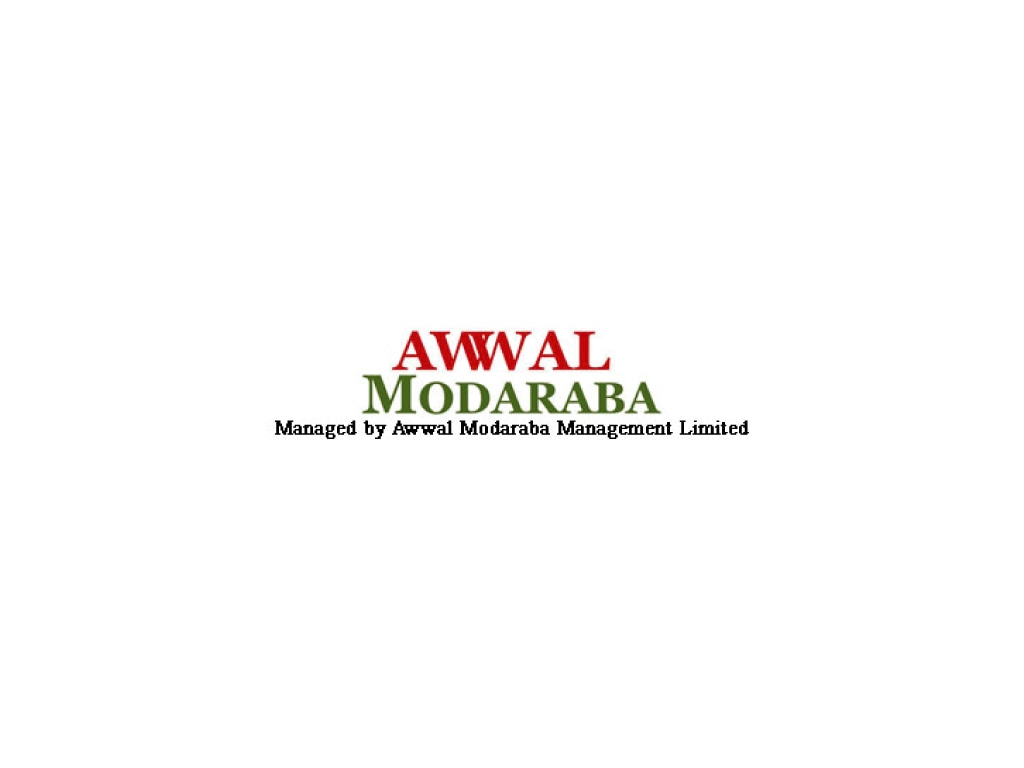Awwal Modaraba (PSX: AWWAL) was incorporated in 2014, and is managed by the Awwal Modaraba Management Limited, however it commenced operations in 2016. The former was formed under the Modaraba Companies and Modaraba (Floatation and Control) Ordinance, 1980. Awwal Modaraba provides working capital, term finance, ijarah, musharika, morabaha, and advisory services to credit worthy customers.
Shareholding pattern
The company is primarily owned by the associated companies, with 99 percent of the certificates held under this category. The associated companies include Awwal Modaraba Management Limited and Pak Brunei Investment Company Limited with 90 percent certificates held by the latter. The rest of the categories hold less than 1 percent of the certificates.

Historical operational performance
Initially the company’s main source of income was advisory fee, however, its share in revenue has gradually declined over a period of about four years. Share of income from musharika finance and deposits from banks has slowly gained traction in the total income, although advisory fee still contributed the most to the total income pie.
The company commenced operations in February 2016 offering Islamic financing products, particularly targeting, hence supporting start-ups growth and financially distressed companies that are doing shariah compliant businesses. During the five months of FY16, the company made a total income of Rs62 million, and a net margin of close to 47 percent. While operating expenses constituted a mere 10 percent of the revenue, preliminary expenses made a large part of the total expenses. Yet in the first year the company managed to make a net profit of Rs29 million. Given that the country saw the highest real GDP growth in eight years during FY16 at 4.7 percent, the company foresaw positive financial performance for the next year.

With the first full year of operations ending FY17, the company saw its total income more than doubling. Share of advisory fee doubled in the total income, while income from musharika finance and deposits from banks further added to the total pie. With preliminary expenses now absent from the accounts, operating and administrative expenses made a larger share in revenue at nearly 15 percent; among other factors, salaries and other staff benefits saw the biggest incline year on year. This was followed by management company’s remuneration as another major expense. Despite this, the rise in revenue offset the costs, taking the net margin to 74 percent.
In FY18, the country experienced political uncertainty with the upcoming elections. This led to reduced business activity as a result of uncertainty in addition to increased cost of doing business and “credit accessibility issues for mid-tier and below clients”. Despite this, Awwal Modaraba saw its highest total income at Rs264 million, of which advisory fee contributed more than 60 percent. The company’s fund size stood at Rs 1 billion, and utilized up to 85 percent at the end of FY18.

Operating expenses continued to rise as it made up almost 20 percent of the revenue; this took the net margin down to almost 70 percent of the revenue. Most of this incline in operating expense came from salaries and staff benefits expense among other factors such as shared service expense and stationery and advertising.
Post the elections held at the start of FY19, the year was marked by rising inflation, high interest rates, and currency depreciation. Amidst such scenario, income from advisory projects reduced considerably- rather it more than halved year on year. With many businesses across various sectors suffering lower revenue and/or losses, and especially with the modaraba’s special emphasis on supporting cash-strapped companies, it became more essential to maintain close coordination with clients to assess the impact.

In addition, the company also took a conscious decision to limit and delay new exposure. Moreover, lower revenue from advisory projects was to some extent supported by high interest rates as the company’s balance sheet was largely unleveraged. With share of operating expenses rising, net margin continued to decline.
Quarterly results and future outlook
With an economic slow down the company had anticipated lower business activity and hence revenue. This was in place as income from advisory fee during 9MFY20, although increased nominally, its share in total income pie reduced. Instead, income from musharika finance took the lead as it contributed 32 percent to the total revenue for 9MFY20, closely followed by income from diminishing musharika finance that contributed nearly 28 percent. With share of operating expenses in the total revenue reducing, net margin improved year on year.

The outbreak of Covid-19 has wreaked havoc with the already struggling economy, with exports declining, cancellation of orders and currency further depreciating. In the face of an unstable economy and scenario during FY19, many new projects had been delayed as the company’s target segment is quite vulnerable. With the fairly recent development of Covid-19, recovery will take time.





























Comments
Comments are closed.